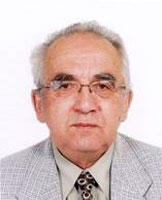Lightning rod is the main element of external lightning protection. Being the highest point among surrounding objects, a lightning rod takes a lightning strike upon itself and passes it to the ground electrode system through down conductors. It would seem that all that remains to be done is to install a lightning rod on the roof. But let's see whether it is as fine as it seems at first glance. Domestic and European regulatory documents contain conflicting requirements to the choice of lightning rods, which causes difficulties in the design and installation of external lightning protection systems. So what to do? Answer in the topical article from professor E.M. Bazelyan.

E. M. Bazelyan, D. Eng. S, Professor;
G. M. Krzyzanowski Power Engineering Institute, Moscow;
acknowledged Russian expert in grounding and lightning protection
Introduction
Introduction into the problem of calculating lightning rod protection zones. What are the conflicts in the regulatory documents and what advantages and disadvantages they contain - read on a separate page..
1. Selection of lightning rods in the IEC standard
This section gives the method of calculation of a lightning rod on the base of the requirement, described in EIC 62305. The attention is given to the absense of explanations in the origin of unnormed values of protection angles and rolling sphere radiuses for different protection levels.
2. Selection of lightning rods in the national regulatory documents
The principal difference of these protection zones in the domestic regulatory documents from those intoduced into the EIC standard is that they originate not from the top of the lightning rod, but are located lower and thus providing more reliable protection from direct lightning strikes. Thus, the main principle of lightning rod operation is considered - the increase of protection reliability with the growth of its elevation over the protected object.
3. Possibilities of the statistical method
The statistical method does not have any restrictions on the number and configuration of the lightning rods being installed and objects under protection. However, the experience of exploitation of high-rise constructions shows that the method can be used for objects 150-200 m high. Thus, protection zone in the national regulatory document IS-153-34.21.122-2003 are restricted by the height of 150 m.
Read more details on a separate page!
4. About the practice to choose lightning rods
Should we increase the height of all lightning rods or maybe it is enough to concentrate on the improvement of the protective effect in relation of some facility? In order to answer this question in the frames of the statistic method, it is easy to get certain number of breakthroughs for any facility, thus discovering the one which is less protected. Then it will be necessary to correct only certain lightning rods, not the whole system.
Read more details on a separate page!
5. Instead of conclusion
How to choose lightning rods after all? Conclusions about the analysis held and also the list of sources are given in the final part of the article.
Read more details on a separate page!
Related Articles:
 Lightning protection of residential and public buildings - answers to frequently asked questions in the design
Lightning protection of residential and public buildings - answers to frequently asked questions in the design
 Lightning Protection of Large Territories: Parks, Grounds, Plant Territories. Page 1
Lightning Protection of Large Territories: Parks, Grounds, Plant Territories. Page 1
 Lightning Protection of Large Territories: Parks, Grounds, Plant Territories. Page 2
Lightning Protection of Large Territories: Parks, Grounds, Plant Territories. Page 2
 Lightning Protection of Large Territories: Parks, Grounds, Plant Territories. Page 3
Lightning Protection of Large Territories: Parks, Grounds, Plant Territories. Page 3

